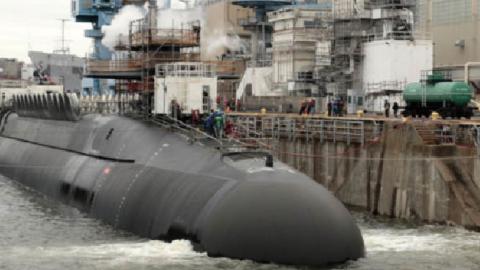This week’s Sea-Air-Space conference highlighted the challenges facing America’s sea services, from tightening budgets to a resurgent China. But focusing only on the Navy, Marine Corps, and Coast Guard’s military contributions overlooks how they could improve US national security and competitiveness through actions outside of combat. To unlock this potential, US leaders need to develop and implement a comprehensive maritime—rather than naval—strategy.
Like its predecessors, the sea services’ most recent policy statement, Advantage at Sea, concentrates on naval operations and almost completely ignores the US maritime industry. This is a missed opportunity. Whereas—despite its challenges—the Navy continues to field a potent force, the nation’s shipbuilding and repair, port operations, and fishing and offshore support fleets are languishing.
Across the Pacific, Beijing is making good on former General Secretary Hu Jintao’s 2012 goal of China becoming the world’s leading maritime power within a decade. Over the years, Chinese government subsidies for state-owned shipping companies have created the world’s largest commercial trading and resource extraction fleets and fostered a robust domestic shipbuilding and repair industry. People’s Republic of China companies are the market leaders in marine port operations, finance, and insurance across the world, and are enmeshed throughout global supply chains, facilitating access for other PRC companies.
Unsurprisingly for a country with a blurred line between commercial and military interests, Chinese investments to build a Blue Economy directly support the PRC’s defense establishment. The buildup of military ships for the People’s Liberation Army Navy, China Coast Guard, and People’s Maritime Militia piggybacks off the expanding commercial shipbuilding and supplier industrial base, which has allowed the country to field the world’s largest naval and constabulary fleets. Similarly, the PRC selectively activates commercial vessels in its merchant marine for strategic sealift, amphibious operations, and other missions. Lastly, Chinese forces leverage the global in-port and at-sea logistical support and intelligence collection provided by PRC companies such as COSCO and China Merchants.
The US cannot match the Chinese government control of the commercial sector. But that doesn’t mean Washington is helpless to make moves that can help.
As a first step, the government should develop, release, and implement a comprehensive national strategy to foster US maritime power as well as strengthen and increase the competitiveness of the maritime industrial base. Congress called on the Department of Transportation to develop such a strategy in 2014, but the resulting document released in 2020 is an anemic affirmation of goals that lacks an implementation plan.
This new White House-led strategy should chart a concrete path to strengthen US maritime power and exploit opportunities to tackle today’s most pressing problems. For example, expanding the use of maritime shipping for cargo could help alleviate bottlenecks that are hindering supply chains and reduce emissions compared to rail or road transportation. Efforts to address climate change and improve competitiveness could be further accelerated by incorporating next-generation propulsion and control technologies into US commercial ships, including the use of electric drive and autonomous systems.
To support military operations, the strategy should expand with a higher stipend the Maritime Security Program fleet of commercial ships that contribute to US economic activity and influence in peacetime and would be ready to support military requirements in a crisis. Through this approach, the Department of Defense could quickly and economically replace most of its aging strategic sealift vessels with the added capacity provided by a larger commercial fleet.
Outside of large Navy ships, the US shipbuilding industrial base is facing a decade of meager sales following recapitalization of most vessels involved in domestic shipping as part of the “Jones Act” fleet. To provide construction yards more stability, a new maritime strategy should direct coordination of government orders for smaller Navy, Coast Guard, and civilian ships with those from commercial customers.
Ship repair yards are facing the opposite problem, with more work than they can support but little knowledge on future demand. The strategy should support the Navy’s return to multi-ship maintenance contracts, complemented with loan guarantees and grants to improve private shipyard and supplier infrastructure. Lastly, the strategy should outline reforms to outdated taxes and regulations—especially related to mariner wages and repair duties—that would align US shipping costs to international standards.
With a secretary of transportation who was in the Navy Reserve, a secretary of defense focused on China, a president who is pursuing expansive plans to reshape infrastructure and the economy, and a host of members of Congress keen to help, there are leaders who could take the helm to craft and implement a comprehensive approach.
Advantage at Sea warned: “our actions in this decade will shape the maritime balance of power for the rest of this century.” The time is overdue for a national maritime strategy that bolsters US prosperity and security.
Read in Breaking Defense


















